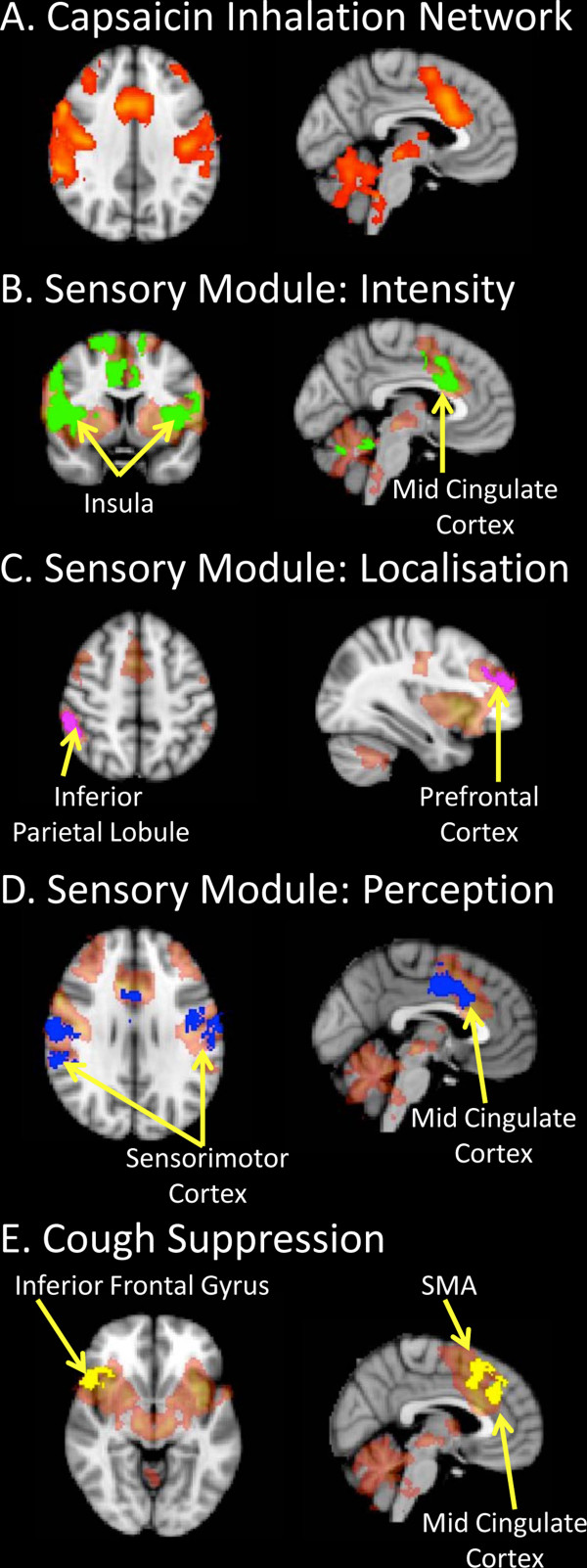Figure 1.
Functional brain maps of sensorimotor activations following capsaicin inhalation in humans. (A) Capsaicin inhalation is associated with the activation of a distributed network in the brain [13]. We propose that this network is composed of several sub-circuits (modules) involved in sensory discrimination and motor control (panels B-E). Our published data indicate that discrete regional responses incorporate modules that (B) encode stimulus intensity, (C) identify stimulus location, (D) determine perceptual experiences and (E) can suppress evoked motor responses (see [7,12]). The module specific activations shown in green, pink, blue and yellow on panels B-E are superimposed on the distributed capsaicin inhalation network (shaded orange) as highlighted in panel A. See cited references for full details of experimental design, data analysis and interpretation.

